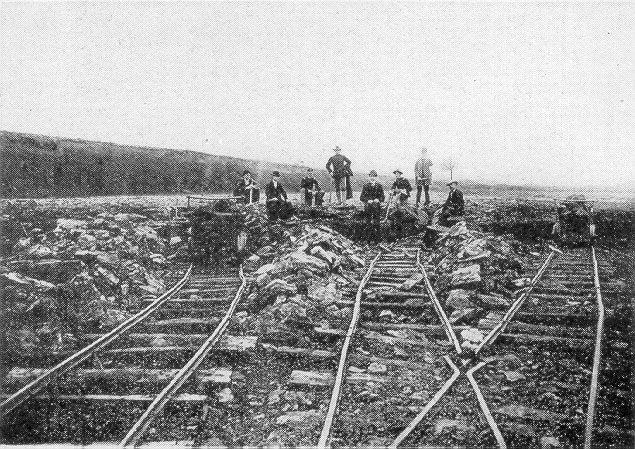Mines & Furnaces
Bath County was home to the first iron ore furnace west of the Allegheny Mountains. Erected in 1791, it was called the Bourbon Iron Furnace, because the area at that time was part of Bourbon County, Kentucky.
Bourbon Iron Furnace
was located on Slate Creek about 2 1/2 miles south of Owingsville on KY-36.
Jacob Myers from Richmond, Va. took up land grants here on Slate Creek, 1782. He built the first iron blast furnace in Ky., 1791. John Cockey Owings and Co. formed to operate furnace. Utensils and tools supplied settlers. Began to make cannon balls, grape shot for US Navy 1810. Furnished munitions for US victory, New Orleans 1815. First blast 1791, last 1838.
Clear Creek Iron Furnace
was located on Clear Creek about 6 miles south of Salt Lick on Clear Creek Road.
Built in 1839 by W. A. Lane and W. S. Allen, the furnace operated until its last blast in 1875. Production of iron at the location ceased from 1857 until 1873, when the furnace was rebuilt and renamed Bath Furnace. In 1874 alone, the reconstructed furnace produced more than 1,339 tons of iron.
Clear Creek, like numerous other Kentucky furnaces, used charcoal for fuel and was purposefully constructed on a stream to take advantage of steam power. Limonite, an abundant iron ore found in Kentucky, was frequently mined and used at this location. This specific ore was ideal as it produced an extremely durable iron. The furnace primarily produced iron that was used to manufacture wheels for railway cars.
Caney Iron Furnace
was located about 5 miles south of Midland and now in the Daniel Boone National Forest. This would be a a few miles southeast of Salt Lick.
Harrison Connor and Joshua Ewing, Sr., began constructing the Caney Furnace in 1837. Ewing operated the Bourbon Iron Works furnace located nearby until it closed in 1838. Caney Furnace was equipped with a hot-blast oven, one of the earliest furnaces of its kind west of the Appalachian Mountains. It was fueled with charcoal and powered by steam. Iron production at the site was successful for a little over a decade until production stopped in 1849. The furnace was briefly revived from 1857 to 1858.
Blockhouse Iron Mine and Howard Hill Mines
shown on the 1884 map of Bath County, were located just northwest of Olympia off US 36 near Old Field Cemetery.
A short railroad spur connected them to the Elizabethtown, Lexington & Big Sandy R.R.
Iron deposits worked in the early 1900s include:
- Clover Creek Iron Tract, Waterdell Rd. 1/2 mile east of Slate Bend Rd/Forge Hill Rd., about 2 1/2 miles south of Wyoming.
- Horton-North Iron Tract, Midland Trail east of Owingsville, about 1/4 mile east of Hart Pike on north side of Midland
- Rose Run Iron Tract, 1/2 mile north of Midland Trail at Rocky Lane
- J. W. Ingram Deposit, 1/2 way between Hope and Sudith
- Horton-South Iron Tract, Midland Trail east of Owingsville, about 1/2 mile east of Hart Pike on south side of Midland
- Indian Creek Iron Tract, Old Sand Rd. about 1 1/2 miles east of Peasticks
Rose Run Iron Ore Deposit
was one of the most significant in the state of Kentucky.
Rose Run mining operation, 1919, University of Kentucky Geological Survey
Contacts
| Marvin Allen |
| Suzanne Shephard |
| Jeff Kemp |


